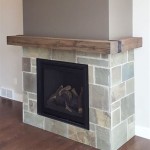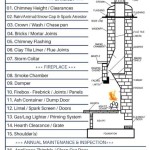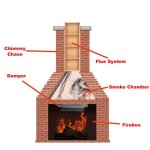Fitting a Wood Burning Stove in an Existing Fireplace
Installing a wood-burning stove within an existing fireplace can be a rewarding project, adding warmth, ambiance, and cost-effective heating to your home. However, it is crucial to understand that the process involves more than simply placing a stove into the fireplace opening. The existing fireplace structure, its firebox size, and the specific stove model all play a significant role in the installation process and its success. This article will guide you through the key considerations and steps involved in fitting a wood-burning stove into an existing fireplace.
Assessing Fireplace Suitability
Before making any purchase decisions, it is essential to assess the suitability of your fireplace for accommodating a wood-burning stove. This involves several key considerations:
- Fireplace Size: Measure the opening of your fireplace, both in width and height. The stove you choose should fit comfortably within these dimensions, leaving adequate spacing for proper airflow and heat distribution.
- Firebox Size: It is crucial to ensure that the firebox of your fireplace is large enough to accommodate the stove's size and design. A too-small firebox can restrict proper combustion and affect the stove's efficiency.
- Flue Size and Material: The existing chimney flue must be compatible with the stove's specifications, specifically in terms of diameter and material. A professional sweep can assess the flue condition and ensure its suitability for the stove.
- Fireplace Construction: Examine the fireplace's structure for any potential weaknesses or damage. Damaged masonry or a faulty damper could compromise the installation and create safety hazards.
Planning the Installation:
Once you have determined that your fireplace can accommodate a stove, the next step is to plan the installation process.
- Stove Selection: Choose a stove that meets your heating requirements, fits within the available space, and complements the aesthetic of your home. Consider factors like fuel efficiency, heat output, and design features.
- Professional Installation: For optimal safety and compliance with building codes, it is highly recommended to hire a qualified and certified stove installer. They will have the expertise to assess the fireplace's condition, install the stove correctly, and ensure proper ventilation and safety features.
- Building Regulations and Permits: Check with your local building department to determine any specific regulations or permits required for stove installation within your jurisdiction. This may include fire safety inspections and compliance with smoke control regulations.
- Fireplace Modifications: In some cases, modifications to the existing fireplace may be necessary to accommodate the stove. This could involve adjustments to the hearth, firebox lining, or the chimney flue. A professional installer will assess the need for any modifications.
Installation Process:
The actual installation process will vary depending on the specific stove model and the condition of your fireplace, but here are some general steps involved:
- Preparation: The existing fireplace opening will need to be prepared by removing any non-fire-resistant materials, such as old fireplace inserts or decorative screens. The area around the fireplace opening should be protected from dust and debris.
- Stove Placement: The stove will be carefully positioned within the fireplace opening, ensuring proper clearance from combustible materials. This positioning is crucial for safety and efficient heat distribution.
- Flue Connection: The stove's flue pipe will be securely connected to the existing chimney flue, ensuring a tight seal to prevent smoke leakage. A professional installer will use appropriate connectors and sealants to ensure a durable and safe connection.
- Hearth and Surrounds: A suitable hearth is typically installed below the stove, offering protection for the floor. Surrounds may be incorporated to enhance the aesthetic appeal of the stove and provide additional fire protection.
- Safety Checks: Once the installation is complete, a thorough inspection will be conducted to ensure the stove is properly installed, vented, and meets all safety standards. This will include checking for proper flue draft, clearance distances, and ventilation systems.
Conclusion:
Fitting a wood-burning stove into an existing fireplace is a complex project that requires careful planning, professional installation, and adherence to safety guidelines. By thoroughly assessing your fireplace's suitability, choosing the right stove model, and working with qualified professionals, you can enjoy the benefits of a wood-burning stove in your home for many years to come.

Converting A Fireplace To Wood Burning Stove Chesneys

Converting A Fireplace To Wood Burning Stove Chesneys

Can You Install A Wood Burning Stove In An Existing Fireplace

Victorian Fireplace Hobbit Installation Small Stoves

How To Prepare A Chimney For Wood Burning Stove Houzz Ie

Woodburner Installations In Victorian Fireplaces Cosy Stoves

Chimney Installations

Can You Install A Wood Stove In Fireplace Direct Stoves

Can You Install A Wood Burning Stove In An Existing Fireplace

Converting Open Fire To A Wood Burning Stove In Exeter
Related Posts








